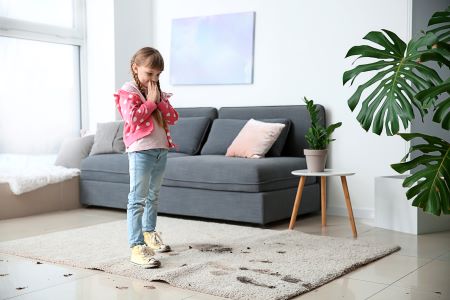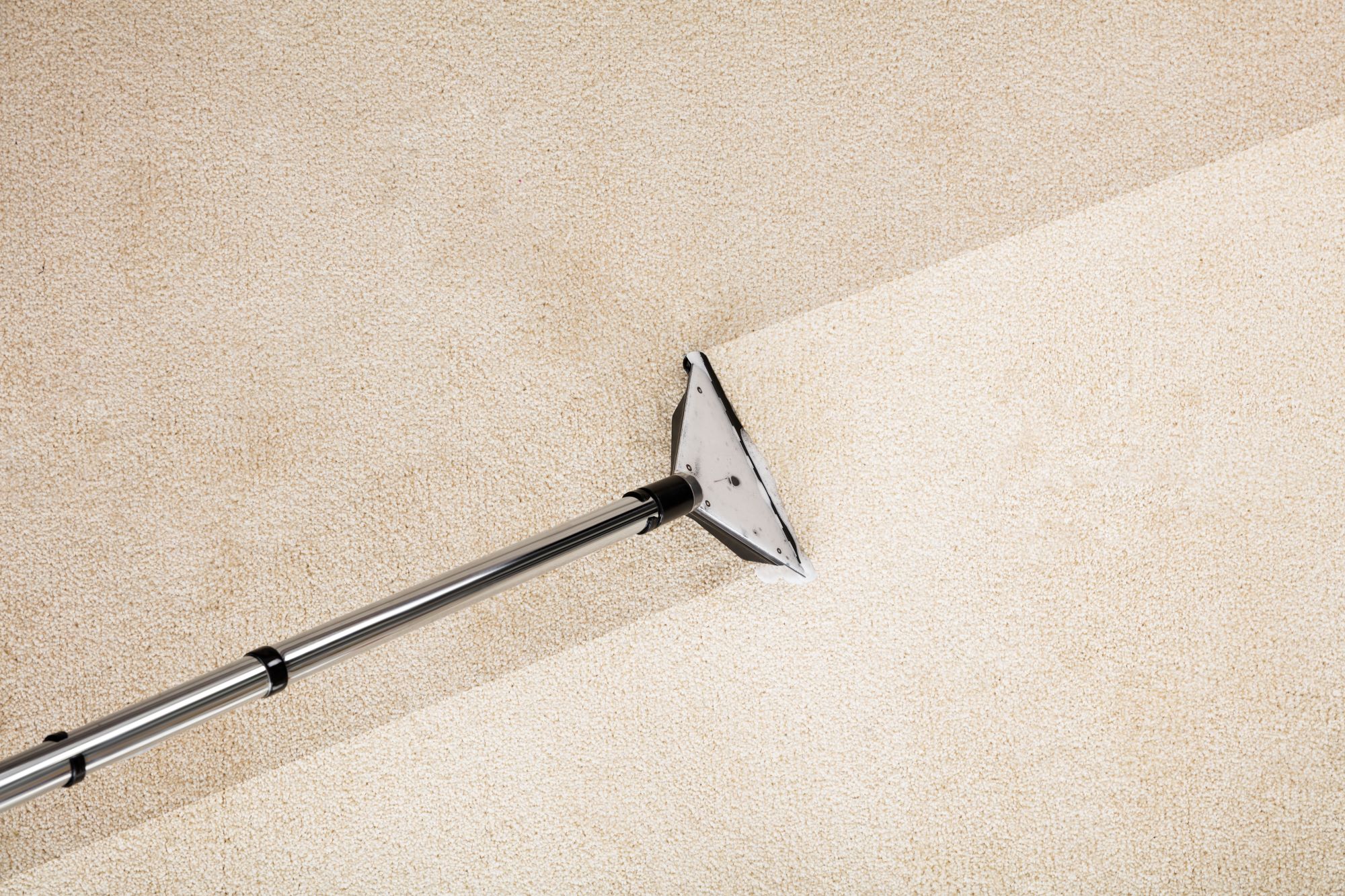Carpet cleaning is an essential aspect of maintaining a clean and healthy indoor environment in both commercial and residential settings. Over time, carpets accumulate dirt, dust, allergens, and stains, making regular cleaning necessary. With numerous carpet cleaning methods available, it can be challenging to determine which one is the most effective for your specific needs. In this comprehensive guide, we will explore various carpet cleaning methods, including commercial carpet cleaning and residential carpet cleaning, and provide valuable carpet cleaning tips to help you make an informed decision.
Understanding the Importance of Carpet Cleaning
Before delving into the various carpet cleaning methods, it’s crucial to understand why keeping your carpets clean is essential. Carpets act as a filter, trapping airborne particles, dust, pet dander, and allergens. Over time, these contaminants accumulate in the carpet fibers, leading to several problems:
- Indoor Air Quality: Dirty carpets can release airborne particles when disturbed, affecting indoor air quality. This can lead to respiratory issues and allergies, particularly in individuals with preexisting sensitivities.
- Health Concerns: Dust mites and bacteria thrive in dirty carpets, potentially causing health problems, including skin irritations, respiratory infections, and allergic reactions.
- Odor: Carpets that are not regularly cleaned can emit unpleasant odors due to trapped odorous particles, such as pet accidents or spilled food and beverages.
- Longevity: Neglected carpets tend to wear out faster, reducing their lifespan and necessitating costly replacements.
Given these concerns, it’s evident that maintaining clean carpets is vital. To achieve this, various carpet cleaning methods are available, each with its own set of advantages and disadvantages.
- Steam Cleaning (Hot Water Extraction)
Steam cleaning, also known as hot water extraction, is one of the most widely used and effective methods for both commercial and residential carpet cleaning. It involves the following steps:
Pre-Treatment: A cleaning solution is applied to the carpet to loosen dirt and stains.
Hot Water Extraction: Hot water, along with a high-pressure jet of cleaning solution, is injected into the carpet and immediately extracted along with dirt and contaminants.
Drying: The carpet is left to dry, typically within 6-12 hours, depending on environmental conditions and the carpet’s thickness.
Advantages of Steam Cleaning:
- Deep Cleaning: Steam cleaning can effectively remove deep-seated dirt, stains, and allergens from carpet fibers.
- Sanitization: The high temperature of the water used in hot water extraction kills bacteria, dust mites, and other microorganisms.
- Versatility: It can be used on various carpet materials and is suitable for residential and commercial applications.
- Minimal Residue: Properly executed steam cleaning leaves minimal residue behind, reducing the risk of re-soiling.
Disadvantages of Steam Cleaning:
- Longer Drying Time: Carpets may take several hours to dry completely, which can be inconvenient in high-traffic areas.
- Professional Equipment: Steam cleaning typically requires professional-grade equipment for optimal results.
- Cost: Hiring professionals for steam cleaning can be more expensive than other methods.
- Dry Cleaning
Dry carpet cleaning methods use minimal moisture, making them suitable for carpets that cannot withstand the saturation involved in steam cleaning. There are two primary types of dry cleaning methods:
Dry Compound Cleaning: In this method, a dry cleaning compound is spread over the carpet, and a machine with rotating brushes agitates the compound to dislodge dirt and stains. The loosened particles are then vacuumed up.
Dry Foam Cleaning: Dry foam cleaning involves applying a cleaning foam to the carpet, which is agitated and worked into the fibers using a machine. After a short dwell time, the foam is vacuumed away, taking dirt and stains with it.
Advantages of Dry Cleaning:
- Quick Drying: Dry cleaning methods typically have shorter drying times than steam cleaning.
- Convenience: Dry cleaning can be done without the need for extensive setup or drying equipment.
- Suitable for Delicate Carpets: It’s a gentle option for carpets that cannot handle excess moisture.
Disadvantages of Dry Cleaning:
- Limited Deep Cleaning: Dry cleaning methods may not be as effective at removing deep-seated dirt and stains.
- Residue: Some dry cleaning compounds may leave a residue that can attract dirt over time.
- Not Ideal for Heavily Soiled Carpets: Dry cleaning is best suited for regular maintenance and may not be effective for heavily soiled carpets.
- Bonnet Cleaning
Bonnet cleaning is a surface cleaning method commonly used in commercial settings. It involves the following steps:
Pre-Treatment: A cleaning solution is applied to the carpet to break down surface dirt and stains.
Mechanical Agitation: A rotary machine equipped with a bonnet pad is used to agitate the carpet’s surface and absorb dirt and cleaning solution.
Drying: The carpet typically dries quickly as this method uses minimal moisture.
Advantages of Bonnet Cleaning:
- Fast Drying: Bonnet cleaning has a short drying time, making it suitable for high-traffic commercial areas.
- Minimal Disruption: It can be performed during business hours with minimal disruption to operations.
- Surface Cleaning: Effective for quickly refreshing the appearance of carpets in between deeper cleanings.
Disadvantages of Bonnet Cleaning:
- Limited Deep Cleaning: Bonnet cleaning primarily addresses surface dirt and may not provide a deep clean.
- Residue: Like dry cleaning methods, bonnet cleaning can leave a residue on the carpet.
- Not Suitable for All Carpets: It may not be appropriate for heavily soiled or delicate carpets.
- Shampooing
Carpet shampooing is an older method that involves applying a foamy cleaning solution to the carpet and agitating it with a rotary brush. The foam traps dirt, which is then vacuumed away once it dries.
Advantages of Shampooing:
- Effective on Heavily Soiled Carpets: Shampooing can be effective at removing tough stains and heavy soiling.
- Agitation: The mechanical agitation helps dislodge dirt and stains.
- Fresh Fragrance: Many carpet shampoos leave a pleasant fragrance.
Disadvantages of Shampooing:
- Residue: Carpet shampoos often leave behind a soapy residue that can attract dirt, potentially causing rapid re-soiling.
- Longer Drying Time: Drying times for shampooed carpets can be longer than some other methods.
- Not Suitable for All Carpets: It may not be suitable for delicate or wool carpets.
- Encapsulation Cleaning
Encapsulation cleaning is a relatively modern method that involves applying an encapsulating cleaning solution to the carpet. The solution encapsulates dirt and stains in a crystalline form, which can be easily vacuumed away once it dries.
Advantages of Encapsulation Cleaning:
- Quick Drying: Encapsulation cleaning has a short drying time.
- Low Residue: It typically leaves minimal residue on the carpet, reducing the risk of re-soiling.
- Suitable for Commercial Use: This method is often used in commercial settings due to its efficiency.
Disadvantages of Encapsulation Cleaning:
- Limited Deep Cleaning: Encapsulation cleaning primarily focuses on surface dirt and may not provide a deep clean for heavily soiled carpets.
- Not Suitable for All Carpets: It may not be appropriate for delicate or wool carpets.
Choosing the Right Method for Your Needs
Selecting the most effective carpet cleaning method depends on several factors, including the type of carpet, the level of soiling, and the specific needs of your commercial or residential space. Here are some guidelines to help you make an informed decision:
- Carpet Type: Consider the type of carpet you have. Delicate or natural fiber carpets may require gentler cleaning methods like dry cleaning or encapsulation, while more durable synthetic carpets can tolerate steam cleaning.
- Level of Soiling: If your carpet is heavily soiled with deep-seated dirt and stains, a method like steam cleaning or shampooing may be necessary. For routine maintenance, dry cleaning or bonnet cleaning can be sufficient.
- Drying Time: Assess how quickly you need your carpets to dry. Steam cleaning and shampooing have longer drying times, while dry cleaning, bonnet cleaning, and encapsulation cleaning offer quicker drying times.
- Residue Concerns: If you want to avoid residue that can attract dirt and require more frequent cleaning, choose methods like dry cleaning or encapsulation cleaning, which leave minimal residue.
- Budget: Consider your budget for carpet cleaning. Some methods may be more cost-effective than others, but keep in mind that quality and effectiveness should be prioritized over cost savings.
- Environmental Concerns: If you have environmental or health concerns, you may want to opt for methods that use eco-friendly and non-toxic cleaning solutions.
Commercial Carpet Cleaning vs. Residential Carpet Cleaning
The choice between commercial carpet cleaning and residential carpet cleaning methods often comes down to the scale and requirements of the space being cleaned. Here’s a comparison between the two:
Commercial Carpet Cleaning:
- Scale: Commercial spaces typically have larger carpeted areas, so methods like bonnet cleaning or encapsulation cleaning are often chosen for their efficiency and quick drying times.
- Frequency: Commercial spaces may require more frequent cleaning due to higher foot traffic. As a result, methods that offer faster drying times and minimal disruption are preferred.
- Budget: Commercial carpet cleaning is often budget-driven, so cost-effective methods like bonnet cleaning or encapsulation cleaning are commonly used.
Residential Carpet Cleaning:
- Scale: Residential spaces are generally smaller, making it more feasible to use methods like steam cleaning or dry cleaning, which offer deeper cleaning and can be more thorough.
- Frequency: Residential carpets may not require cleaning as frequently as commercial ones, allowing for methods with longer drying times like steam cleaning.
- Specific Needs: Homeowners may prioritize methods that are gentle on their carpets and family members, such as pets and children, making dry cleaning or steam cleaning more suitable.
Carpet Cleaning Tips
Regardless of the method you choose, following these carpet cleaning tips can help you achieve the best results and maintain the longevity of your carpets:

- Regular Vacuuming: Vacuum your carpets regularly to remove loose dirt, dust, and debris. This prevents dirt from embedding deep into the carpet fibers.
- Address Stains Promptly: Act quickly to address spills and stains. Blot the stain with a clean cloth or paper towel to absorb as much liquid as possible before attempting to clean it.
- Test Cleaning Products: Before using any cleaning product on your carpet, test it in an inconspicuous area to ensure it doesn’t damage or discolor the carpet.
- Follow Manufacturer’s Guidelines: Refer to your carpet manufacturer’s cleaning recommendations to determine the best cleaning method for your specific carpet type.
- Hire Professionals: For deep cleaning and challenging stains, consider hiring professional carpet cleaners who have the expertise and equipment to deliver optimal results.
- Protect High-Traffic Areas: Use area rugs or carpet runners in high-traffic areas to reduce wear and tear on your carpets.
- Use Carpet Protectors: Consider applying carpet protectors to prevent future stains and make it easier to clean spills.
- Keep Pets Clean: Regularly groom and clean your pets to reduce the amount of fur and dirt they bring into your home, which can accumulate in your carpets.
- Maintain Humidity Levels: Carpets can suffer damage from excessive moisture or dryness. Maintain a suitable indoor humidity level to preserve the integrity of your carpet.
- Rotate Furniture: Periodically rotate heavy furniture to prevent excessive wear on specific areas of your carpet.
Effective carpet cleaning is crucial for maintaining a clean and healthy indoor environment in both commercial and residential spaces. The choice of the most suitable cleaning method depends on factors like the type of carpet, level of soiling, and specific needs of the space. While various methods, including steam cleaning, dry cleaning, bonnet cleaning, shampooing, and encapsulation cleaning, are available, each has its own set of advantages and disadvantages.
When deciding on the best carpet cleaning method, consider the scale and requirements of the space, as well as your budget and environmental concerns. Additionally, following carpet cleaning tips can help you achieve the best results and prolong the life of your carpets. Ultimately, clean carpets not only enhance the aesthetic appeal of your space but also contribute to a healthier and more comfortable living or working environment.

